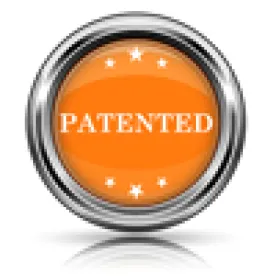In Synopsys, Inc. v. Mentor Graphics Corp., a split panel of the Federal Circuit found “that there is no statutory requirement that the Board’s final decision address every claim raised in a petition for inter partes review.” Appeal Nos. 2014-1516, 2014-1530, slip op. at 12 (Feb. 10, 2016). The panel majority held that 35 U.S.C. § 318(a) only requires the Board to address claims as to which review was granted.
The decision arose from Synopsis’s petition for inter partes review (IPR) of claims of a patent owned by Mentor relating to a method for tracing bugs in the design of computer chips. The Board instituted review as to some claims, but found that there was no reasonable likelihood of invalidity as to others. The Board ultimately issued a final written decision finding some of the claims subject to IPR to be anticipated but finding others not proven to be invalid.
Synopsys argued that because § 318 directs the Board to issue a final written decision with respect to “any patent claim challenged by the petitioner,” the final written decision must address every claim raised in the petition. Id. at 8. The panel majority disagreed, finding that § 318(a) permits the Board to institute on a claim-by-claim basis. Id. at 8-10. The panel majority additionally found that the Board’s practice is authorized by 37 C.F.R. § 42.108. Id. at 10-11.
Synopsis additionally appealed the substance of the Board’s findings that some of the claims addressed in the Board’s final written decision were not proven anticipated. Among other grounds, Synopsis argued that the Board improperly required it to present expert testimony. The court rejected this argument. Referring first to district court cases, the court observed that while expert testimony is not required, when the technology is complex and “beyond the comprehension of laypersons” expert testimony is sometimes essential. Id. at 18-19, quoting Centricut, LLC v. Esab Grp., Inc. 390 F.3d 1361, 1369 (Fed. Cir. 2004). In the context of IPR proceedings, the court acknowledged that the expertise of Board members may make it easier to understand and soundly explain the teachings and suggestion of the prior art without expert assistance. Id. at 19, citing Belden Inc. v. Berk-Tek LLC, 805 F.3d 1064, 1079 (Fed. Cir. 2015). On the other hand, as observed by the court, “the Board is not precluded from finding that the technology in a particular case is sufficiently complex that expert testimony is essential for a petitioner to meet his burden of proving unpatentability. Id.
In any event, the court found that the Board did not actually require Synopsis to provide expert testimony, but rather noted that Mentor did so, while Synopsis did not. The court found no error by the Board in giving substantial weight to this fact given the complexity of the technology. Id. at 24.
Synopsis additionally argued that the Board erred in failing to find that a particular limitation of the challenged claims was obvious over the prior art. The court, however, observed that the Board rejected the argument as being raised for the first time in Synopsis’s reply and not responsive to arguments made in Mentor’s response. The court agreed with the Board that Synopsis failed to properly raise this argument in its petition. Id. at 21-22.
Mentor cross-appealed the Board’s denial of Mentor’s motion to amend its claims. The Board denied the motion on two grounds. First, the Board found that Mentor failed to show that the amended claims would not have been obvious over one reference asserted in the IPR. Second the Board found that Mentor had not shown general patentability over the prior art. Relying on its prior decisions in Microsoft Corp. v. Proxyconn, Inc., 789 F. 3d 1292, 1303-08 (Fed. Cir. 2015) and Prilotec, Inc. v. ScentAir Techs.., Inc., 807 F.3d 1353, 1363 (Fed. Cir. 2015), the court found the Board’s first narrower holding to be sufficient. Notably, the court declined to address whether the Board properly could require the patent owner to prove patentability more generally as to the “prior art.”
In a lengthy dissent, Judge Newman took issue with the majority’s holding that the Board may issue a final written decision addressing only some of the claims challenged in the petition. The dissent noted that § 318(a) mandates that the Board “shall issue a final written decision with respect to the patentability of any patent claim challenged by the petitioner and any new claim added under section 316(d).” The dissent further contended that no Chevron deference should be accorded to PTO Rule 42.108(a) because it is not in accordance with the plan language of the statute.
Judge Newman further took issue with the Board’s practice of having Board judges render decisions to institute. Citing to her recent dissent in Ethicon Endo-Surgery, Inc. v. Covidien LP, No. 2014-1771 (Fed. Cir. Jan. 13, 2016), Judge Newman maintained her position that under the statute, the institution decision in an IPR is to be made by the Director, not by the Board. The dissent cites to AIPLA comments on the PTO’s trial proceedings, which allege that having the decision to institute and a final decision decided by the same Board judges “creates an actual or perceived bias against the patent owner.
The Federal Circuit’s decision in Synopsis is notable in several respects:
First, the decision affirms the Board’s discretion to address only certain claims upon which it institutes trial. If the dissent’s interpretation were accepted, it would require the Board to address all claims challenged in the petition even if it only found one of the claims to actually be likely shown invalid. Were the court to reverse the Board as to this practice, there would be a substantial risk that the trial phase would be expanded to a large number of issues that could not be adequately addressed given the statutory timeline for resolution of IPRs and the congestion in the Board’s docket.
Second, in dictum, the panel decision indicates that claims not subject to institution are not subject to estoppel. Although Synopsis appealed the Board’s refusal to issue a final decision as to claims it found unlikely to be proven unpatentable, it presumably found some comfort in the fact that the denial of institution would likely avoid estoppel. If the PTO does not find sufficient grounds to institute based on the evidence and arguments set forth in the petition, it would not seem favorable to the petitioner if the Board were to issue a final written decision based primarily on the petition addressing those claims.
Finally, the decision reaffirms the danger of failing to address fully all limitations of all challenged claims in the petition. While there is some possibility for a petitioner to address alleged shortcomings in the prior art in reply to a patent owner response, a petitioner runs a substantial risk of failing to meet its burden of demonstrating invalidity if the petition fails to demonstrate how each claim element is taught or suggested by the prior art.




 />i
/>i

